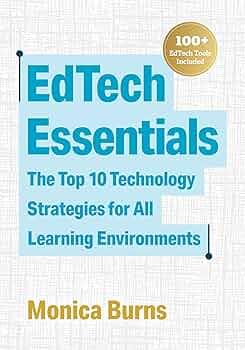Mastering Data Privacy in EdTech: Essential Strategies for Secure Learning Environments
In today’s digital world, educational technology (EdTech) platforms are revolutionizing how students and teachers interact, share information, and access resources. However, this surge in digital adoption brings significant concerns regarding data privacy in EdTech. With sensitive student data at stake and evolving legal frameworks, it’s more essential than ever to adopt robust data privacy practices and create secure learning environments. This article delves into actionable strategies, practical tips, and best practices for safeguarding student information and mastering data privacy in EdTech.
Why Data Privacy Matters in EdTech
Schools and EdTech platforms handle vast troves of personal data—from grades and attendance to health records and behavioral analytics. A data breach not only compromises student security but can also led to regulatory non-compliance, legal consequences, and a loss of trust. Data privacy in EdTech is critical for:
- Protecting Student Identity: Guarding against cyber threats and identity theft.
- Regulatory Compliance: Meeting legal requirements like FERPA, COPPA, and GDPR.
- Building Trust: Ensuring parents,students,and educators feel confident in the system.
- enhancing Learning Outcomes: Creating a safe space for students to learn without privacy concerns.
Key Challenges in EdTech Data Privacy
Despite the benefits, EdTech platforms face several hurdles in protecting data privacy:
- Data Collection Overload: Collecting more data than necessary increases risk exposure.
- Cloud Vulnerabilities: Cloud-based platforms are prone to cyberattacks if not properly secured.
- Third-Party Integrations: Apps and tools connecting with EdTech systems may not follow the same privacy standards.
- Lack of Awareness: Students and staff may not fully understand digital privacy issues.
- Rapid Technology Adoption: Innovation often outpaces regulatory frameworks, creating gray areas in compliance.
Essential Strategies for Mastering Data Privacy in EdTech
To ensure secure learning environments, educational institutions and EdTech developers should implement the following strategies:
1. Adopt a Privacy-by-Design Approach
- Incorporate data privacy into the architecture of EdTech platforms from day one.
- Limit data collection to what is strictly necessary for educational objectives.
- Leverage pseudonymization and anonymization for stored data where possible.
2. Implement Robust Data Encryption
- Use end-to-end encryption for data in transit and at rest.
- Regularly update encryption protocols and monitor for emerging vulnerabilities.
3. Establish Role-Based Access Controls (RBAC)
- Ensure data access is restricted by user roles, such as student, teacher, or administrator.
- Log and monitor all access activities to quickly detect unauthorized attempts.
4. Provide Continuous Privacy Training
- Educate staff and students on digital privacy fundamentals and data protection best practices.
- conduct regular webinars and workshops devoted to cybersecurity threats and safe online behaviors.
5. Manage Third-Party Integrations Carefully
- Vet vendors for their data privacy policies and compliance with relevant regulations.
- Limit third-party access to only essential datasets.
- Draft clear data-protection agreements with all partners.
6. Ensure Regulatory Compliance
- Familiarize yourself with current laws such as FERPA, COPPA (for the US), and GDPR (for the EU).
- Appoint a Data Protection Officer (DPO) if necessary, especially for organizations handling sensitive information at scale.
7. Conduct Regular Security Audits
- Perform vulnerability assessments and penetration testing on all digital systems.
- Update privacy policies and security measures based on audit findings.
Practical Tips for Educators and Administrators
- Use strong, unique passwords: Encourage everyone in your institution to use robust credentials and multi-factor authentication.
- minimize data retention: Store personal information only as long as it is needed,then dispose of it securely.
- Transparent communication: Proactively inform parents and students about what data is collected, how it is indeed used, and their rights regarding that information.
- Parental controls and consent: For platforms involving minors, gather explicit parental consent before collecting or using children’s data.
- Stay updated: Regularly check for software updates from EdTech vendors and apply patches promptly.
Case Studies: Successful Data Privacy Implementation in EdTech
Case Study 1: A School District in California
After suffering a ransomware attack, one school district overhauled its EdTech ecosystem by implementing end-to-end encryption and strict access controls. The result? No repeated incidents and increased confidence among parents and staff.
Case Study 2: European Online Tutoring Platform
Before entering the EU market, this platform invested heavily in GDPR training and compliance infrastructure. They anonymized user data for analytics, ensured clear user consent, and saw a sharp increase in European registrations and customer satisfaction.
benefits of Achieving data Privacy in EdTech
- Improved Reputation: Trustworthy platforms attract students, parents, and institutional clients.
- Reduced Risk: Lower risks of data breaches, regulatory fines, and costly litigation.
- Enhanced Learning Experience: Students feel safer and more engaged in online learning environments.
- Future-Proof Compliance: Staying ahead of privacy laws secures continuity and scalability for EdTech businesses.
First-Hand Experience: The Educator’s Perspective
“When our school transitioned to online learning, I was initially worried about how student data would be handled,” shares Linda, a high school teacher. “But with regular training, transparent communication from IT, and clear protocols, both staff and students became more aware of protecting their digital identities. It made a big difference—not just in preventing incidents,but in building a culture of responsibility.”
Conclusion: Creating Secure Learning Environments for All
Mastering data privacy in EdTech is not a one-time project—it’s an ongoing commitment requiring technical expertise, policy growth, and user education. By strategically combining privacy-by-design, strong encryption, careful management of third-party tools, and up-to-date regulatory knowledge, educational institutions and EdTech providers can create truly secure learning environments. Protecting student privacy isn’t just about compliance; it’s about empowering learners, fostering trust, and shaping the future of digital education.
Start implementing these essential strategies and practical tips today to make data privacy a cornerstone of your EdTech success!

